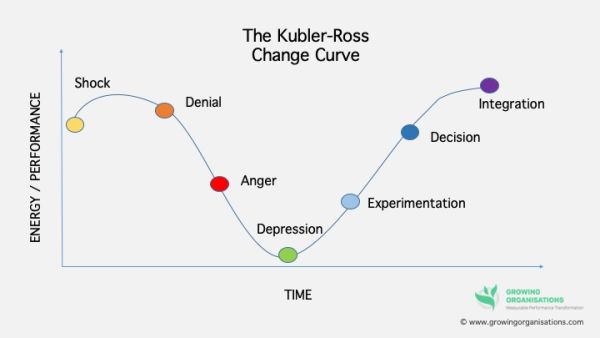Overcoming internal resistance to change
Written by Jess
Nav
This page contains affiliate links, for which we may earn commission.
Have you ever decided to change something in your life, say, to help save the planet, but found you’ve resisted carrying it through? Even though you are the one wanting to do it?
We are hardwired to resist change – it’s natural. Part of the brain – the amygdala – interprets change as a threat to the body and releases the hormones for fear, fight or flight. Your body is actually protecting you from change
emersonhc.com
This blog will give you 3 positive tools, to make changing your lifestyle easier.
- Break old habits with happiness
- Strengthen your ‘no’ muscle
- Feed your internal motivation
It is a well known fact that people struggle with changes made in the workplace
Businesses evolve and see better ways of doing things. That means change needs to happen, that affects the employees.
Even if the change is a positive one, people resist any disruption to the status quo, It’s completely natural.
Employees experience 4 stages of the ‘Change curve’.
The 4 stages of the Change curve are:
- Shock and denial: as they react to the challenge of the status quo;
- Anger and fear: they fear the impact, feel angry, actively resist or protest the changes;
- Acceptance: pessimism and resistance give way to some optimism and acceptance;
- Commitment: they not only accept the changes but also start to embrace them: they rebuild their ways of working.


There is extensive information online for businesses, to know how to support their employees through this emotional roller-coaster.
What about internal resistance to personal changes?
When Davey (my partner in crime) was the first to start cutting out meat, I resisted, hard.
We had watched the same video. It was about how marketing techniques trick you into turning a blind eye to the factory farming involved in meat production. It was a real wake up call for both of us.
We were equally as affected by it. I shared Davey’s horror at what we’d just seen.
Resistance is fuelled by fear of what isn’t comfortable or predictable, and this is why you hold yourself back from achieving things that you have potential for and from living the life that you’re capable of creating
Thought Catalog
I went through all 4 stages in the Change curve. Even though it was me who wanted to change.
- Shock and denial: even though I felt as sad about what I’d watched as Davey, I did not let the reality in. I carried on eating meat, the status quo continued.
- Anger and fear: the thought of my future without meat in it was depressing, it was going to be inferior. I felt like I would go through the rest of my life feeling deprived of good food. I did not want what I could see coming.
- Acceptance: eventually, the above feelings waned, and I was ok. We started eating vegetarian meals, which were delicious.
- Commitment: the thought of going vegan was still a million miles away, but I decided I would go easy on myself through this transition and allow it to be very gradual. I ate less and less meat and got more and more ok with that.
I seem to go through this same process each time I introduce new, greener ways of living. I resist, feeling like my life will be inferior, but then I adjust, and I don’t feel deprived at all. I genuinely feel better.
I’ve figured out what techniques I’ve used to help me on my journey.


Your inner self desires comfort. This overrides any desire to step into the unknown.
3 positive tools to use, to help you make changes
We can use psychology to make planet-positive choices feel more positive for us.
1. Break old habits with happiness
Quitting smoking was one of the most positive, empowering experiences for me (bar having children).
I read a book called Easy Way to Quit Smoking, by Allan Carr*.
For any of you that has or know someone who has quit smoking, the regular way will know that quitting smoking is known more for despair, withdrawal, moodiness and irritability.
It felt like I was being hypnotised by the book, to believe that quitting smoking was a good thing, not a bad thing. It turns out, I kind of was, it’s called neurolinguistics.
I wasn’t avoiding eating meat because it was bad to eat meat. But because it was something that I felt positively about.
Neuro linguistics. His way of speaking positively. Was a really positive way of changing my mindset. It constantly reinforced how good it was not to smoke, rather than how bad it was to smoke.


Give it a go! Next time you are faced with an ‘inferior’ choice (that you think won’t make you as happy as you are now), dig deep.
Search and find the happiness within that change and focus on that. Fill yourself with happy thoughts and you can change the way you feel about it.
2. Strengthen your ‘no’ muscle
One technique I was taught to overcome my binge eating disorder, was to build a strong ‘no’ muscle.
Normally, I would avoid the chocolate aisle in the supermarket because I wouldn’t be able to stop myself from buying chocolate. My counsellor said that I should walk down it, look directly at the chocolate, and (in my head) say ‘no, no, no!’. To walk tall, with my shoulders back, to give me that extra boost of confidence too, to feel strong in my decision that I do not want the chocolate!
She explained that repetition of an action like this gets easier and easier. The more you practice, the more you strengthen your ‘no’ muscle.
I did as she suggested, and it really worked. It made me stronger. I could confidently say ‘no’ to temptations as they appeared.
My next victory was the kitchen aisle in the supermarket


It is so tempting (if you love kitchenware as I do) to buy non-food things in your weekly food shop, that could so easily be bought secondhand.
I used the ‘no’ technique to stop myself from wanting all the stuff, and it worked. I can now confidently be in front of any new kitchenware and say ‘no’ to it, and happily walk away.
You could try this anywhere that you’re likely to impulse buy new things.
Walk down the aisle, head held high, shoulders back.
Look those pots, pans and Tupperware right in the eye and say ‘no’! I bet, after a while, you’ll feel stronger.
3. Feed your drivers: reinforce your dislike for the things driving Climate Change
Drivers are the things that have driven you to make changes in your lifestyle. The more informed you are, the easier it is to find and stick to greener ways of living.
Some quick facts to help feed your drivers...
Fast Fashion
“The fashion industry is now the second-largest generator of pollution on Earth after the oil industry, which is driven by the snowballing effect of ‘fast fashion”
A staggering 20,000 litres of water are needed to create only 1kg of cotton – that’s enough to make just one T-shirt and a pair of jeans.
Guardian 50 ways to green up your life
Will drive you to: stop contributing to the problem by buying unsustainably produced clothes; love your clothes for longer; don’t throw your clothes in landfill (give away or recycle).
Plastic Pollution
Single-use plastic ends up in the ocean, breaks up and then wildlife eats it thinking it’s food. Dead birds and whales’ stomachs are found to be completely full of plastic. From seals to seagulls, all sorts of marine life have died being tangled up in plastic that humans have discarded.
Will drive you to: always leave the house with your reusable bottle; shop in plastic-free shops; reduce, reuse and recycle.
Rising sea levels
Rising Co2 emissions are causing the planet to heat up. We are on track to experience mass displacement due to the rising sea levels, which is due to the melting ice caps.
Will drive you to: switch to a green energy supplier; avoid flying and holiday locally; eat locally or grow your own.
Droughts
Cape Town almost ran out of water in 2018. They had 90 days’ worth of water left before the city was going to have to shut off the water supply. They managed to turn it around by changing the city’s water habits, and with the return of some rain, but what will they do next time the drought lasts longer?
Will drive you to: take shorter showers, only do full loads in the dishwasher/washing machine; if it’s yellow, let it mellow; don’t let the tap run while you wash your vegetables (us a bowl of water); water plants in the cool part of the day; don’t run the hose to wash your car (use a bucket instead, then the hose just to rinse it), don’t buy fast fashion.
Deforestation
The world is losing 27 football fields worth of forest every minute according to WWF. 80% of that is due to unsustainable agriculture. The forest is set alight, mainly to make way for cattle farming soy for animal feed and palm oil (which is in most products you can think of; soap, bread, crisps, ice cream, pizza bases etc…). All animals that live in the forests die from this.
Will drive you to: stop eating beef, buy sustainably produced palm oils only (or products with no palm oil), buy locally grown wood like oak (not teak, mahogany etc…).
4. Connect to your drivers
Even when you know all the facts, and you know how bad something is, it’s still very easy to disconnect from them.
You need to remind yourself of your drivers, what they are and what they mean to you. Then you’ll be stronger than ever and feel happy about saying ‘no’.
If I walk down the high street and my drivers are connected, I remember what these clothes represent: the pollution; the amount of water used; the chemicals; the effect on the people that live near there. That makes it easier for me to not want to go into the fast-fashion outlets and spend my money.
If I walk down the high street and my drivers are disconnected, I don’t think about anything to do with Climate Change and the fast fashion industry, I can easily, and happily, walk into one of those shops and buy some new stuff. And I have. I’m telling you this, so you know it’s normal. It’s hard to remember to connect your drivers all the time. And if they’re disconnected, it’s easy to ignore them.
In Summary
Change is hard. It’s natural. But there are ways we can override the inner desire to stay in our comfort zones.
Do you have any tips you can share with us? I’m assuming this will just be the tip of the iceberg, I’d love to hear more.
Want to stay in touch and hear more tips and interesting stories about the second-hand world? Don't forget to sign-up!
